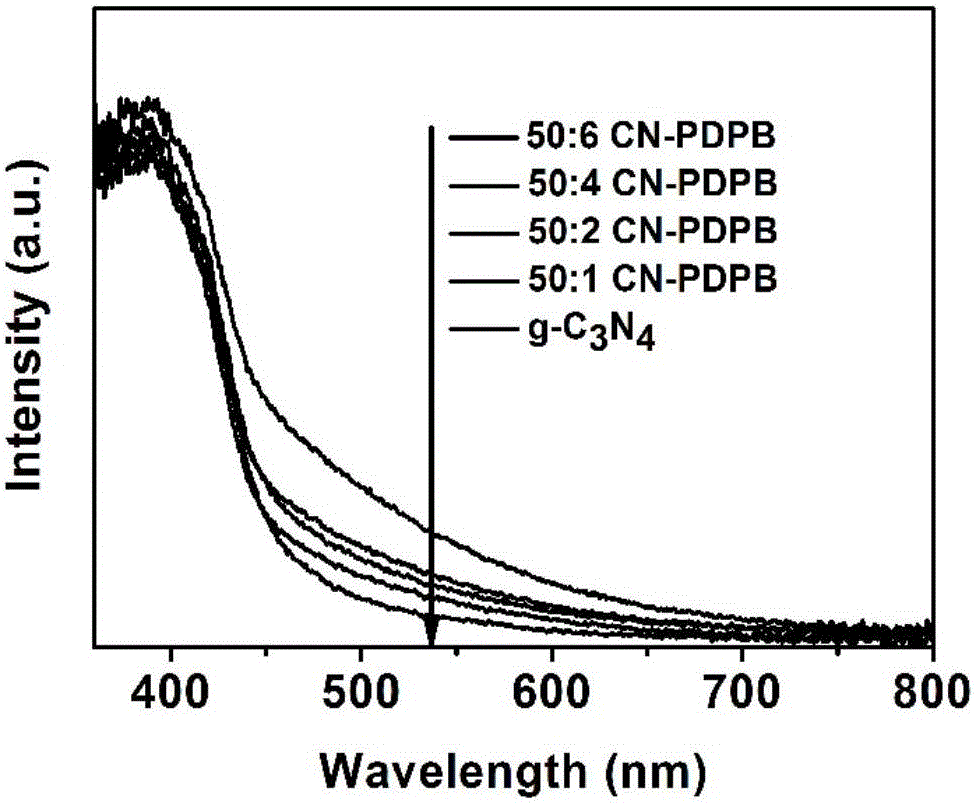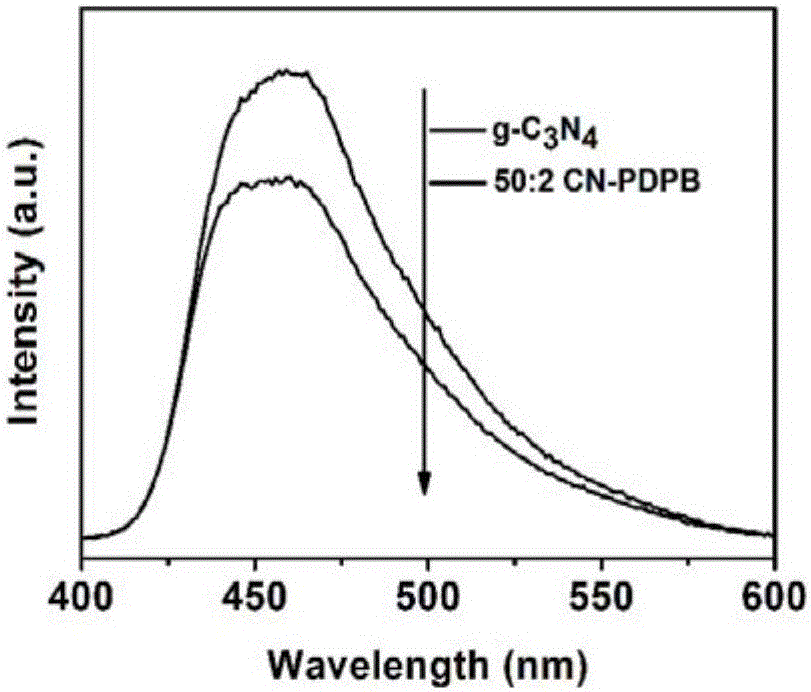Preparation and application of g-C3N4 and polymer PDPB compounded photocatalyst
A polymer, composite light technology, applied in the field of nanomaterials, can solve the problems of small specific surface area, high probability of photo-generated electrons and holes recombination, low photon effective utilization rate, etc., to achieve good catalytic activity, less environmental pollution, and improved light The effect of catalytic efficiency
- Summary
- Abstract
- Description
- Claims
- Application Information
AI Technical Summary
Problems solved by technology
Method used
Image
Examples
Embodiment 1
[0027] g-C 3 N 4 preparation of
[0028] Add 6g of melamine into a crucible with a lid, place it in a muffle furnace and raise the temperature to 500°C at a rate of 4°C / min, keep it for 2 hours, then raise the temperature to 520°C at a rate of 2°C / min, and keep it for 2 hours. After cooling down to room temperature, it was taken out to obtain a yellow product g-C 3 N 4 , ground into powder for later use.
Embodiment 2
[0030] Preparation of 50:1 CN-PDPB
[0031] Dissolve 10mg PDPB in 10mL ethanol solution, then add 0.5g g-C 3 N 4 Stir for 24h. Then the ethanol solvent was evaporated to dryness in an oil bath, and then placed in an oven at 70°C to dry overnight, cooled naturally to room temperature and ground to obtain a 50:1CN-PDPB material.
Embodiment 3
[0033] Preparation of 50:2 CN-PDPB
[0034] Dissolve 20mg PDPB in 10mL ethanol solution, then add 0.5g g-C 3 N 4 Stir for 24h. Then the ethanol solvent was evaporated to dryness in an oil bath, and then placed in an oven at 70°C to dry overnight, cooled naturally to room temperature and ground to obtain a 50:2CN-PDPB material.
PUM
 Login to View More
Login to View More Abstract
Description
Claims
Application Information
 Login to View More
Login to View More - R&D
- Intellectual Property
- Life Sciences
- Materials
- Tech Scout
- Unparalleled Data Quality
- Higher Quality Content
- 60% Fewer Hallucinations
Browse by: Latest US Patents, China's latest patents, Technical Efficacy Thesaurus, Application Domain, Technology Topic, Popular Technical Reports.
© 2025 PatSnap. All rights reserved.Legal|Privacy policy|Modern Slavery Act Transparency Statement|Sitemap|About US| Contact US: help@patsnap.com



